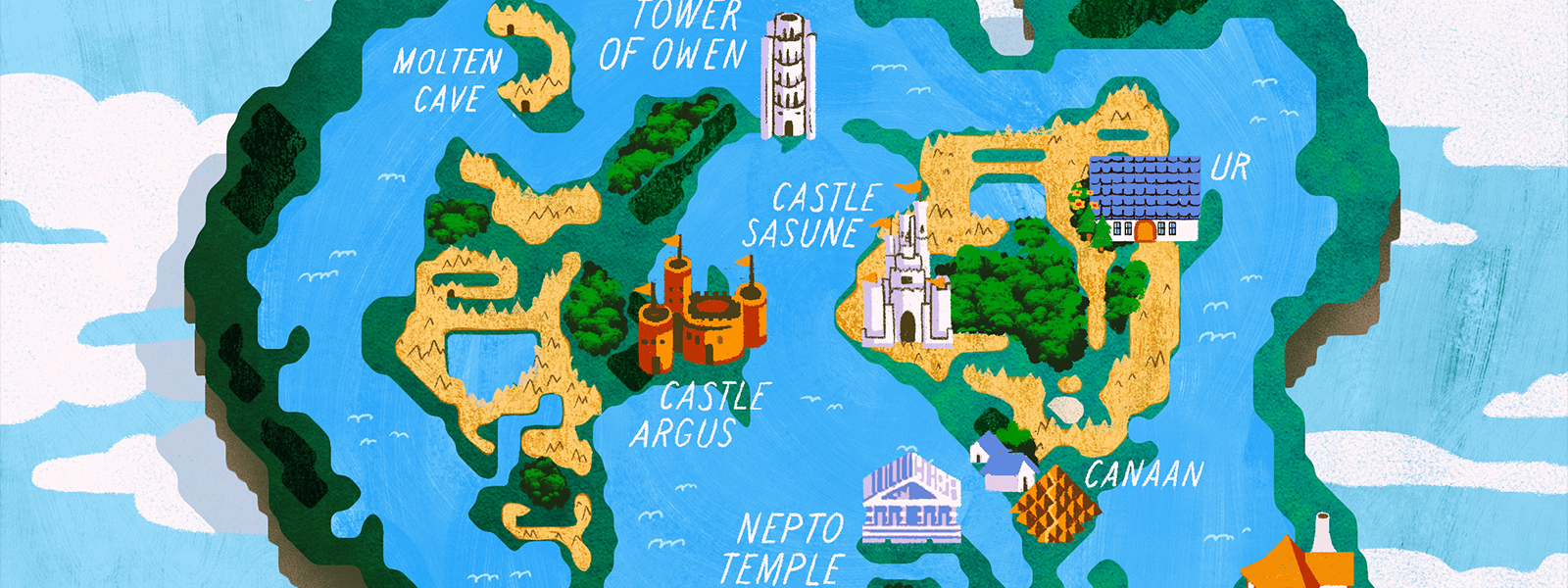Only two years after Final Fantasy II, Japan got another sequel. An exclusive close to the first trilogy of games: Final Fantasy III. Released on the Famicom, it would remain that way for quite some time. Outside of fan translations, there was no official release of this version. In 2006, the world got its first official taste of this game in the form of a 3D remake on the Nintendo DS. While I played a large portion of the fan translation I didn’t sit down with it until the DS version. I only got so far into the game before the forced social networking frustrated me enough to stop. Mobile phones got a port of the 3D version and so we are playing the PC version of that port. Which is great since they replaced social media with monster hunting!
The Gulgan thus prophesied: “The earthquake was only the beginning. The great tremors that swallowed the crystals, the light of our world, only to spawn monsters from the depths of the scarred land, are nothing but harbingers of what has yet to come. Something is coming…fathomless, ominous, and full of sorrow… But hope is not yet lost. Four souls will be blessed with light, and so it shall begin…
Final Fantasy III differentiates itself from its siblings with the Job System. The Job System allows a character to change their once static role in the party to whatever may be needed on the fly. Your Job determines what you can equip and what passive and active skills you have. Magic is no longer permanent, instead, it is equipped much like weapons and armor.
To prevent constant swapping of jobs, there is a Job Adjustment Phase. This is a period where characters will be weakened until a certain number of battles are fought. Depending on the difference between the two jobs, this period is longer or shorter. After the number of battles is met, the character will go back to full power. This is something that will be encountered often as there is no carryover between jobs. The benefits of leveling a job up are only retained while in that job.
Expectations
I remembered the DS version was a fun experience. I had played it after playing other games with Class/Job mechanics, so I was let down by the lack of customization. I always like it when you can retain something from the jobs you have been working on. I didn’t remember much of the plot, however, I distinctly remembered there were sudden difficulty spikes. All in all, I was excited to get to this one since this was the first one I remembered fondly.
Objectives
So in the original DS version, you had to send letters to other people with the game, and get replies. This led to unlocking side quests. The steam version, thankfully, changed this. Instead, the trigger for these quests is the current bestiary percentage discovered. A much more sensible decision, despite there being completely missable entries. These quests do not open anything exceptionally useful aside from a weapon and a job. The weapon is powerful but usable by only a handful of classes. Then there is a secret class that can become the most powerful class if maxed out. The final extra is the usual fare of a super boss in the form of the Iron Giant (insert Vin Diesel joke here). A super boss I need to point out gives no reward other than a proof-of-victory key item. Hard pass.
Review
The plot of Final Fantasy III harkens back to Final Fantasy I’s style of story. Large than life and very much feeling like a Dungeons & Dragons campaign. Only this time our characters had some personality (in the 3D version at least) and the NPCs weren’t as flat. The story however is very reactionary. A set of events triggering one another and we are simply along for the ride, a common style of storytelling. While there is a deeper plot, we aren’t as much a part of it as I wish we were.
The largest flaws in Final Fantasy III are both related to jobs. These are what I think are the biggest blemishes on this game. The first is the lack of customization. Maxing out a job does nothing for a character once you change that job for a different one. This can leave you feeling sore when new jobs come around and there is no choice but to change. This ties into the second flaw: required jobs. There are multiple points in the game where you are required to have specific jobs in your party. If you haven’t trained them up enough ahead of time they become a weak link. And some of these jobs are one-trick ponies that will never serve a purpose outside of this part of the game. These two points are what eld to the most grinding I had done up to this point in these games.
Another blemish—which I will point out only because I fell victim to it—is the final dungeon. The final dungeon is a near-endless gauntlet of bosses and encounters with tough enemies. There is little chance for recovery and zero chance to save. A loss to the final boss of the game is an extreme setback. It has been told to me that this a large reason why people quit this game.
Final Thoughts
My expectations were met. The game was very fun despite the need for some intense grinding and a major setback at the end. My biggest tip is to avoid grinding until you have decided what your final party will be. Once decided, maxing them out won’t feel like such a waste.
Final (Fantasy) Score: Three Crystals out of Four


